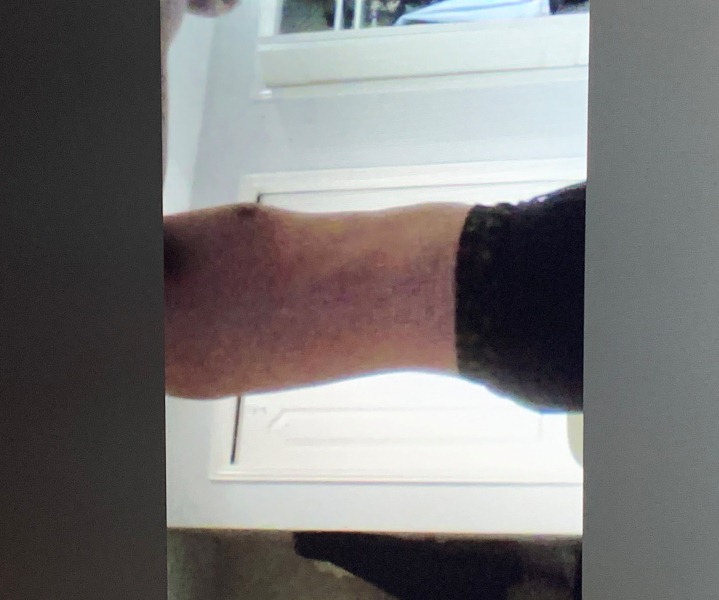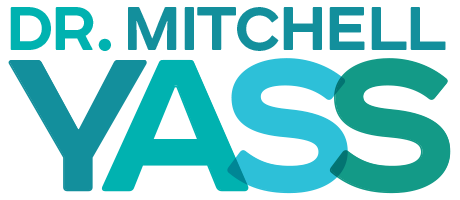

The Yass Method has professed that more than 98% of cases of pain are from muscular causes. They include a muscle straining or a muscle straining and causing another muscle to compensate and strain; a muscle can create joint pain by leading to a misalignment of joint surfaces due to weakness or imbalance of the muscles that attach to the joint; a muscle can refer symptoms; or a muscle can impinge on a nerve that then refers symptoms.
The important point to note is that when muscle is responsible for pain, there should also be a correlative change in posture and/or movement. Since muscles are responsible for creating posture and movement, if a muscle strains and elicits pain there should be a change in posture that is represented by a change in the pull of the strained muscle on the bones that it attaches to.
Case in point. This particular fellow that i have only been working with for 4 weeks. He suffered from lower back pain for over 5 years with the worst pain occurring over the past year. it was devastating enough to cause him to become a recluse in his home. he couldn’t work, couldn’t sustain relationships, slept on the floor because sleeping on any surfaces was too painful. Needless to say, his lower back pain had destroyed his life.
Let’s look at the objective indicator of the cause of his lower back pain. it was clear that his psoas muscles were extremely shortened. these muscles attach to the lumbar spine so being so shortened led to excessive pulling eliciting pain at the lower back. by the way another symptom that was felt was burning when standing or sitting for any period of time This was false identified as being neurological in nature when it was simply lactic acid buildup in the muscles that support the lower back which were fighting to keep this guy up when sitting or standing and fighting the shortening of the psoas muscles to pull him forward. The postural variation that derives from severely shortened psoas muscles is an anterior tilt and increased lumbar lordosis. that is to say that the front of his pelvis points down and the lower back is severely arched. looking at photo #1 this should be clearly seen. What makes his case so unique is that the excessive arching didn’t end where the lumbar spine meets the thoracic spine. in this guy’s case his psoas muscles were so shortened that they actually led to a reversal of the thoracic spine to where it is not bowing out but is actually arched or concave all the way up to the bottom of the shoulder blade. this is a situation i have never seen before.
this level of force of the psoas muscles being so shortened as to be able to reverse the thoracic curve should make it clear why he was correlatively feeling such levels of pain at the lower back. so with this understanding that apparently was not clear to any other medical practitioner he has seen and he had seen them all, he was instructed to perform progressive resistance exercises including hamstring curl and hip extension. these two exercises focus on strengthening the hamstrings and gluteus maximus. these are the opposing muscles to the psoas (hip flexors). he was instructed to perform the exercises 3 times a week with a level of resistance that would cause the muscles to adapt and get stronger. as they got stronger they would create a lengthening of the psoas muscles by creating an increasing opposing force. Fast forward 4 weeks and you can see the results. Look at Photo #2. His spine has been almost completely corrected. He has developed a normal arch in the lumbar region and thoracic spine begins to become convex right at the top of the lumbar spine. this guy’s lower back pain has dropped over about 80-90%. he is able to leave his home now. he sees his friends. he is able to sleep on a bed now. he is able to move pretty much freely. he describes it as being given back his life.
The point of the post is to show that there are objective indicators that do correlate to pain. when the tissue eliciting pain is muscle, you can expect to see altered posture and/or movement patterns. any medical practitioner that does not attempt to use these types of findings to help determine the cause of pain is simply neglecting what the body is trying to present as all the possible indicators of the cause of pain. Muscular causes do not show up on diagnostic tests and there are no medical specialists that are educated or trained to identify muscular causes. so when something as grossly obvious as this change in posture clearly reaffirmed the cause of this person’s pain to be strained and shortened psoas muscles, every “medical practitioner” seemed to miss it.
it’s your choice. Seek care from the medical establishment or can miss something this obvious or get the Yass method that uses an interpretation of the body’s presentation of symptoms to identify the tissue in distress which happens to be muscle in more than 98% of cases. If you have any questions, please contact me by email at drmitch@mitchellyass.com. If you would like to schedule a skype or zoom session to establish the cause of your pain and if confirmed to be muscle, help resolve it, please email to set up an appointment.
